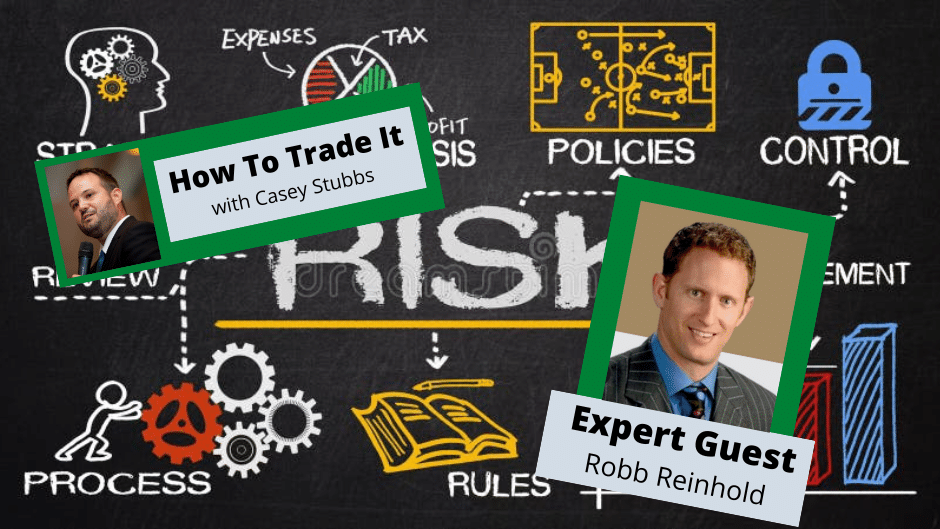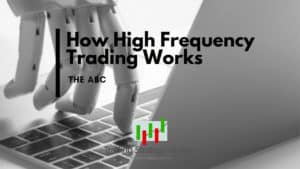Risk Management Trading Strategy with Robb Reinhold

In this conversation, Robb Reinhold discusses the importance of risk management in trading and shares his personal journey in the trading world. He emphasizes the need for self-awareness and training the brain to make rational decisions in high-pressure situations.
Robb also introduces his YouTube channel, the Flat Earth Trading Society, where he explores the significance of exit strategies in trading. Additionally, he provides information about Maverick Trading and Maverick Currencies, prop trading firms that back traders with capital.
Subscribe to How To Trade It
Key takeaways, include:
- Risk management is crucial in trading and involves making correct decisions based on a trading plan, especially when faced with adversity.
- Training the brain and developing self-awareness are essential for successful risk management.
- It takes time and experience, typically around five to seven years, to master risk management in trading.
- Exit strategies are just as important as entry strategies in trading, and the Flat Earth Trading Society YouTube channel explores the significance of exit strategies.
Maverick Trading and Maverick Currencies are prop trading firms that provide traders with capital and support.
Risk Management overview
Risk management in trading involves strategies and processes implemented to minimize potential losses while trading financial instruments like stocks, commodities, currencies, or derivatives. It’s a crucial aspect of trading to protect capital and ensure long-term success. Here are some key elements:
- Position Sizing: Determining the amount of capital to allocate to each trade based on risk tolerance and the size of the trading account. This ensures that a single trade doesn’t excessively impact the overall portfolio.
- Setting Stop Losses: Establishing predetermined levels where a trade will be automatically exited to limit losses if the market moves against the position. Stop losses help control risk by defining the maximum acceptable loss on a trade.
- Diversification: Spreading investments across different asset classes, industries, or securities to reduce the impact of any single investment’s poor performance on the overall portfolio.
- Risk/Reward Ratio: Assessing potential profits against potential losses before entering a trade. Traders often aim for a favorable risk/reward ratio, where the potential profit is higher than the potential loss.
- Risk Assessment: Analyzing market conditions, volatility, and other factors that could affect the trade’s outcome. Understanding the risks associated with a particular trade or market is crucial for making informed decisions.
- Portfolio Monitoring and Review: Regularly reviewing and adjusting the portfolio to ensure it aligns with the risk tolerance and overall trading strategy. This includes reassessing positions, adjusting stop losses, or exiting trades that no longer meet the predefined criteria.
Effective risk management doesn’t eliminate risks entirely but aims to control and mitigate them to protect capital. Traders often combine multiple strategies to create a comprehensive risk management plan that suits their trading style and objectives.
More from Robb…
When I was in 6th grade, we had a great teacher who threw away the textbook and taught us real-life things. One day, a man in a suit from a bank came in and explained how banks work, how they hold the money and how to write a check (dating myself). We all received a blank checkbook and our teacher told us we all had “bank accounts” in his class and good grades/behavior got you money in (deposit) and bad grades/behavior debited your account (withdrawal).
The next week, he brought in some Wall Street Journals and taught us about stocks and how to read the stock tables. He explained we could use our money to buy and sell stocks and all we needed to do was fill out an “order ticket” he had available. I was likely the only kid in class interested, but this is all I wanted to do.
In 1997, when I was 22, I started dabbling in the market (the beginning of online trading) with the little money I had. I learned of a local trading firm, Maverick Trading, where you could go into the office which had a dedicated T-1 line (no home internet was available), trading computers and fellow traders with lots of
experience to train you.
Over the next few years, I traded in that office and was nicely profitable, but with many ups and downs. I opened my own satellite office in 2000 and became owner of Maverick Trading a few years later. Since then, we have transitioned into a Proprietary Trading Firm where we hire traders to
trade our capital privately.
Over the years, we’ve trained hundreds of traders and I’ve spent 20 years watching over the shoulders of these traders as a Risk Manager on a daily basis, watching the trades made. I’ve seen traders fail and lots of traders succeed wildly. I know the key to trading success isn’t external, but internal in self-control and trading psychology. I’ve dedicated the last 15 years to psychology, neuroscience and behavior modification to try to assist our traders. I feel I am in a unique position to truly understand what it takes to make it in the business of trading after 25 years.
Connect with Robb Reinhold:
- YouTube: https://www.youtube.com/@FlatEarthTradingSociety
- Facebook: https://www.facebook.com/MaverickTrading
- LinkedIn: https://www.linkedin.com/in/robb-reinhold-540a7813a/
- Instagram: https://www.instagram.com/robbreinhold/
Connect with Casey:
- Website: https://caseystubbs.com
- YouTube: https://www.youtube.com/TradingStrategyGuides
- YouTube: https://www.youtube.com/caseystubbs
- Facebook: https://www.facebook.com/TradingStrategy
- LinkedIn: https://www.linkedin.com/in/caseystubbs
- Twitter: https://twitter.com/caseystubbs
- TradingStrategyGuides.com: https://www.tradingstrategyguides.com/
- Global Prop Trader: https://globalproptrader.com
- Email: podcast@tradingstrategyguides.com
Subscribe to How To Trade It
Disclaimer: Trading carries a high level of risk, and may not be suitable for all investors. Before deciding to invest you should carefully consider your investment objectives, level of experience, and risk appetite. The possibility exists that you could sustain a loss of some or all of your initial investment. Therefore, you should not invest money that you cannot afford to lose. You should be aware of all the risks associated with foreign exchange trading, and seek advice from an independent financial advisor if you have any doubts.






